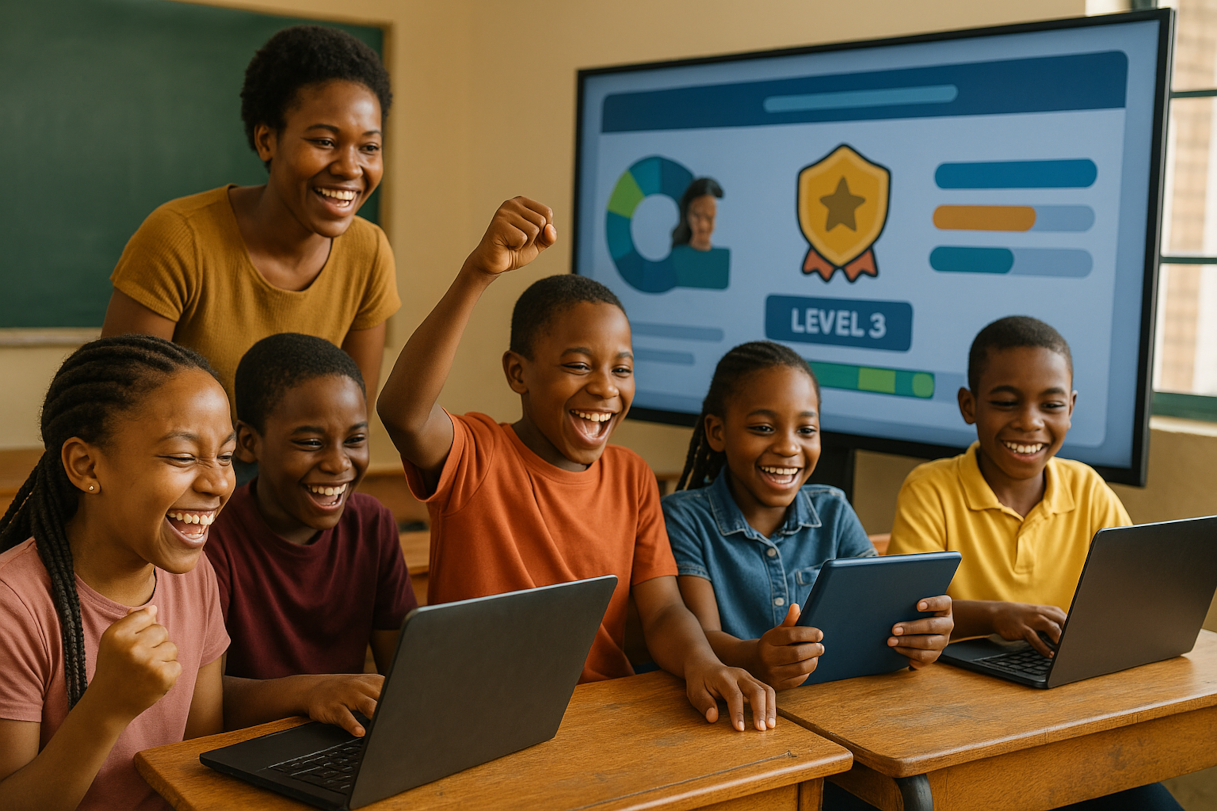Imagine a classroom where students cheer during a math challenge, race to complete grammar quests, and celebrate leveling up in science. Sounds like a video game, right?
Topic: "Gamification in Education: Turning Classrooms into Learning Playgrounds"


Well, welcome to the power of gamification in education—a fresh, innovative teaching method that is transforming the traditional classroom into an exciting, interactive, and motivating environment.
What is Gamification in Teaching?
Gamification is the application of game elements and mechanics in non-game settings—in this case, education. It doesn’t mean turning the class into a game, but rather infusing game principles into lessons to make learning more engaging.
This includes:
-
Earning points or badges for completed tasks
-
Unlocking new “levels” as students master concepts
-
Competing in friendly classroom challenges
-
Using storylines or missions to guide lessons
Why Gamification Works
Gamification taps into something deeply human: the love of challenge, reward, and progress. When students are treated like players in their own learning journey, motivation spikes—and so does achievement.
Here’s why it’s effective:
-
Instant feedback keeps students on track
-
Safe failure means students can try again without fear
-
Clear goals increase focus and persistence
-
Recognition (badges, leaderboards, certificates) boosts confidence
-
Fun factor keeps engagement high, even in difficult subjects
???? Real-World Examples
-
Math Quest Adventure
Students earn coins for solving problems. Coins can be used to unlock tips or hints. There’s even a boss battle at the end of each unit—a timed quiz challenge! -
Grammar Gladiators
Students “fight grammar monsters” by spotting and correcting errors. Correct answers earn XP (experience points) and move them up the leaderboard. -
Science Missions
Each topic is a mission—like saving a planet from pollution or designing a new food system. Students complete real-world tasks and present their findings as part of the storyline.
???? Tools That Can Help
Tutelage Manager can be enhanced to support gamified learning through:
-
Progress tracking dashboards
-
Badges and rewards system
-
Points-based quizzes and interactive tasks
-
Leaderboards for healthy competition among peers
???? Tips for Teachers
-
Start small – You don’t need to gamify every lesson. Begin with quizzes or homework.
-
Use storylines – Build excitement around a mission or theme.
-
Celebrate progress – Even small wins matter.
-
Include collaboration – Let students team up for quests to promote teamwork.
-
Keep it inclusive – Make sure everyone can participate, not just the fast learners.
Conclusion: Play to Learn, Learn to Play
Gamification doesn’t mean replacing teaching with games. It means using what makes games powerful—engagement, motivation, and fun—to supercharge the learning experience.
When students feel like heroes in their own academic journey, they don’t just learn more—they love learning more. That’s innovation at its best.

